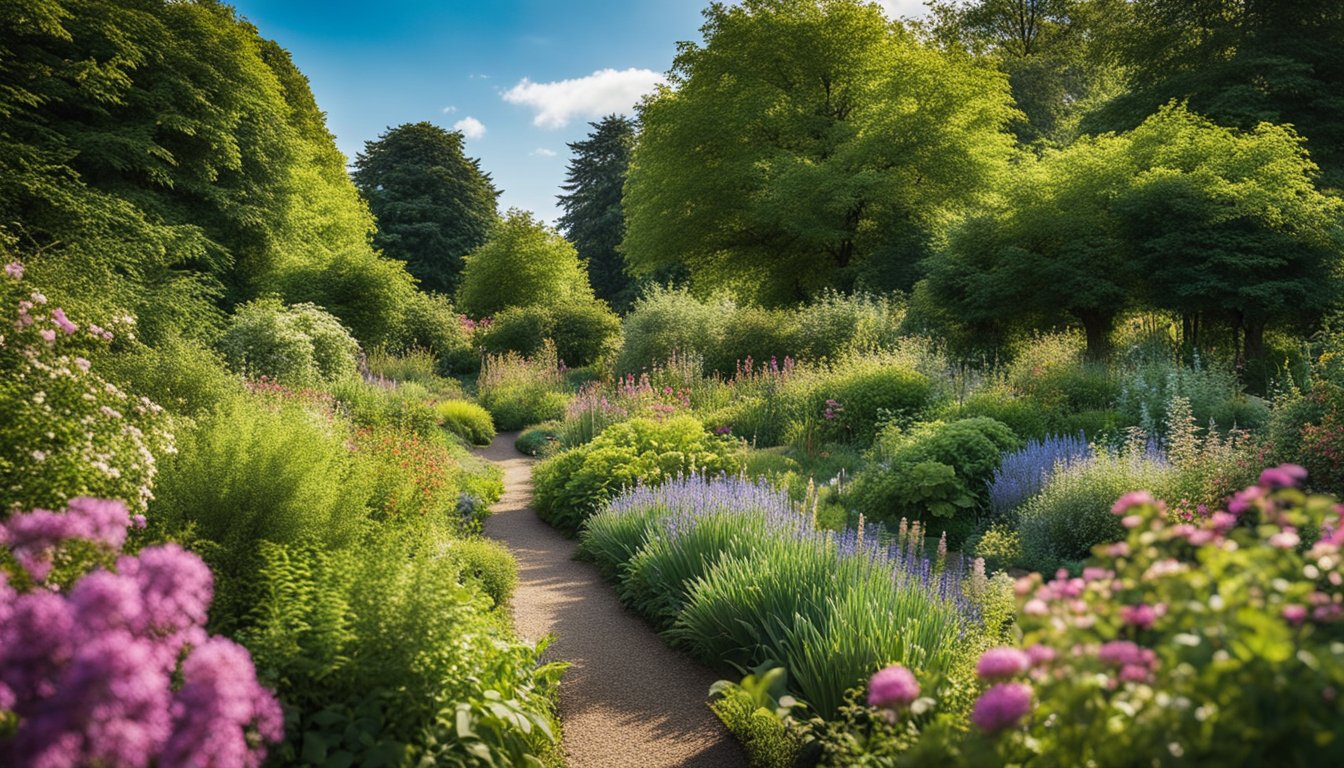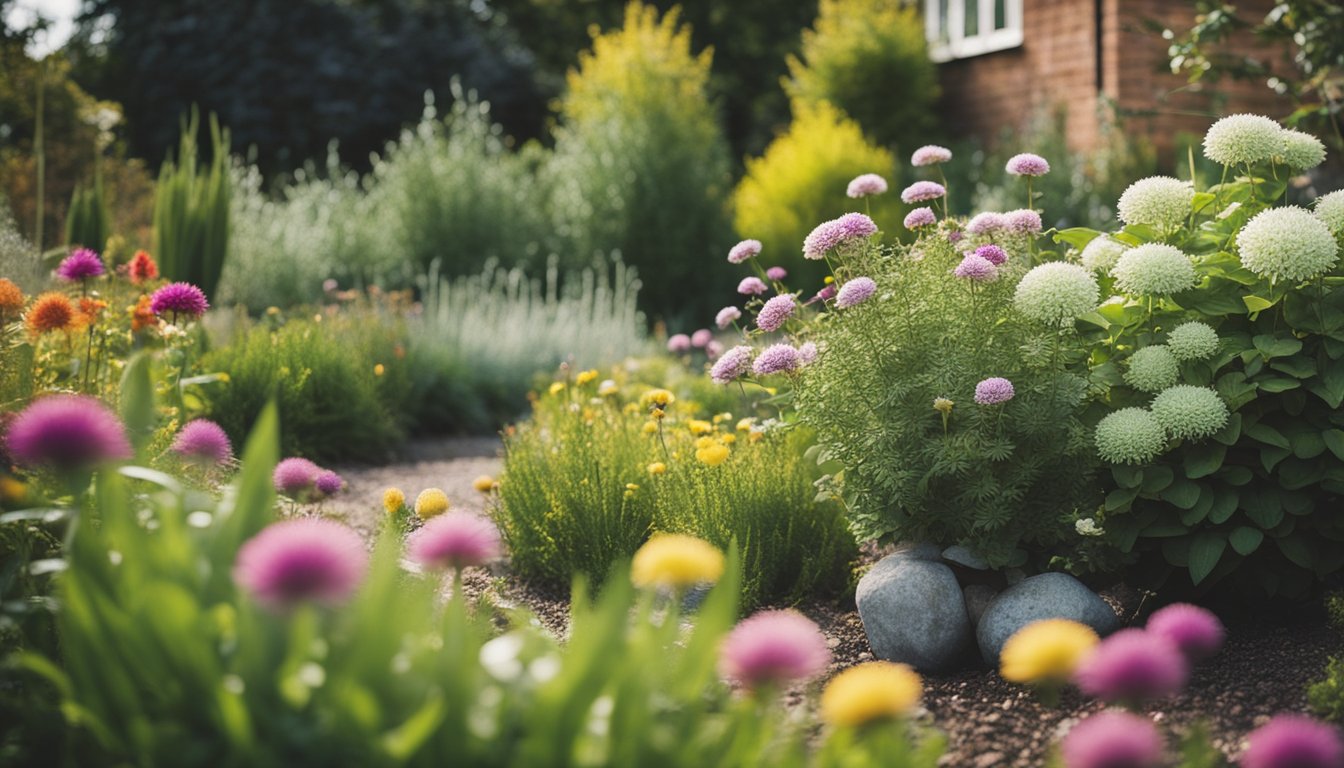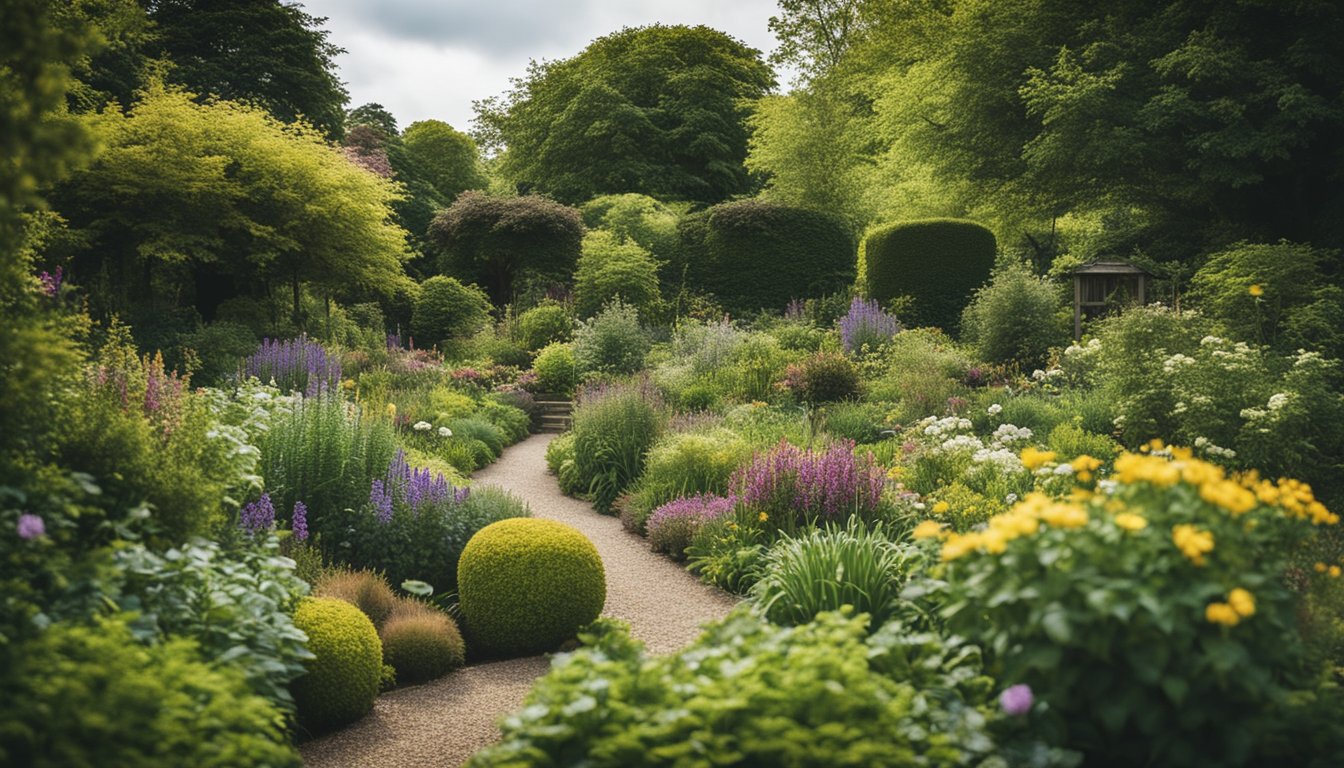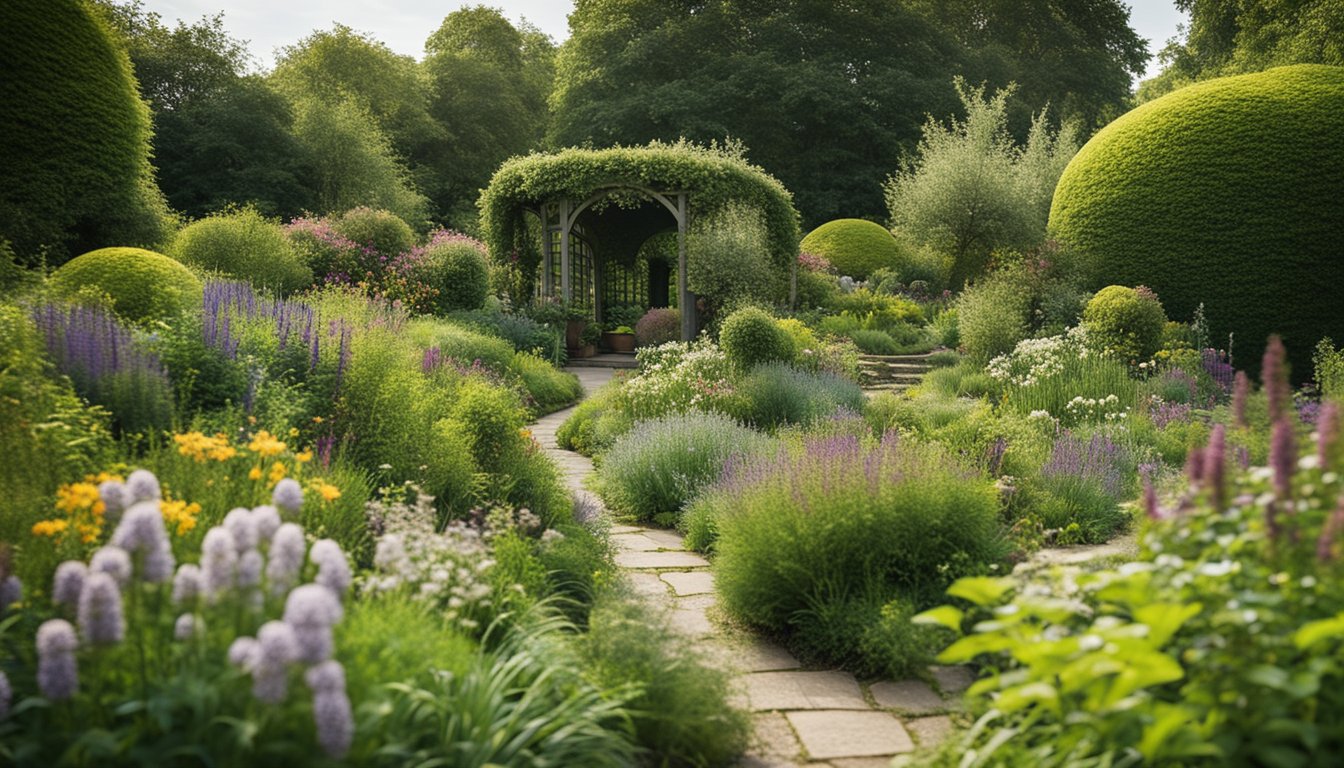Late updated: 04 Feb 2025 14:02
Written by: Emily Thornton
Exploring Seasonal Native UK Garden Tips: Enhance Your Local Flora
Exploring the changing seasons in a UK garden brings a unique opportunity for us to embrace the beauty and resilience of native plants. By selecting species that naturally thrive in our local climate, we reduce the need for intensive maintenance and contribute to sustaining local biodiversity. As we dig into the rich tapestry of native flora, our gardens can become vibrant, environmentally-friendly havens.

We find that the charm of native UK plants lies in their adaptability to seasonal shifts. Through spring's awakening and summer's bloom, into autumn's vibrant display, and the quietude of winter, each season offers its own palette of possibilities. Embracing these cyclical changes, we can plan our gardens to showcase a continuous display of nature's wonders.
By sharing our experiences and challenges, we hope to inspire fellow garden enthusiasts to explore the simplicity and beauty of native plants. Cultivating these gardens not only honours our natural landscape but also fosters a deeper connection with the living world around us.
Key Takeaways
- Native plants thrive with less maintenance in UK gardens.
- Seasonal planning enhances the garden's continuous appeal.
- Embracing native species supports local biodiversity.
Getting Started with Native Plant Gardening

Native plant gardening is an enriching way to engage with our local environment. By choosing native species, we support biodiversity and create habitats for wildlife. Let's explore how to start a native plant garden successfully.
Understanding the Local Climate and Biodiversity
Our UK climate varies across regions, impacting plant choices. Understanding this helps us select suitable native plants. From the damp, peaty soils of Scotland to the chalky terrains of southern England, each area offers unique conditions. By aligning our gardens with local biodiversity, we support native wildlife.
Exploring local conservation groups or botanical gardens can provide insights into which species are thriving in our area. These resources can be invaluable for sustainable gardening practices that encourage ecological balance.
Selecting the Right Native Plants
Consider native species like bluebell, foxglove, and hawthorn. These plants adapt well to local conditions and require less maintenance. Trees like English oak and wild cherry offer structure and shade, while native shrubs such as rosa canina add texture and colour.
We might also explore lavender and common heather for fragrance and seasonal appeal. Research and planning ensure a diverse garden that flourishes all year round. Achieving this harmony in our garden can yield a stunning, cohesive space.
Benefits of Native Gardens to Pollinators and Wildlife
Native plant gardens are a boon for pollinators and wildlife. Bees, butterflies, and beneficial insects rely on these plants for nectar and pollen. By providing food resources, we create a thriving ecosystem that supports various species.
Improving habitat diversity increases the presence of wildlife, ranging from insects to birds. This enhancement is vital for conservation efforts, helping sustain the natural balance that many creatures depend on. A flourishing garden is more than beautiful; it’s a refuge for life.
Garden Design with Seasonal Interest in Mind
Designing with the seasons in mind introduces continuous interest and vitality. We should plan for a mix of bulbs, perennials, and shrubs that bloom at different times. The spring bloom of bluebells and the summer display of foxgloves create a dynamic landscape that evolves through the year.
Incorporating trees and evergreen shrubs ensures year-round structure and texture. Thoughtful layout and spacing allow each plant to shine, ensuring the garden remains lively during gloomy winter months. A well-planned design balances aesthetics with ecological benefits, achieving a garden that’s both beautiful and purposeful.
Seasonal Care and Maintenance Tips

Our focus is on guiding you through key practices for each season to ensure your UK garden flourishes year-round. By mastering early planting, enhancing soil, conserving water, and supporting local wildlife, we can create environments that are not only beautiful but also sustainable and thriving.
Spring Garden Prep and Early Planting Advice
Spring is an opportunity to awaken the garden with vibrant activity. Let's begin by preparing the soil; incorporate compost and organic matter to enrich the earth and enhance its fertility. As the risk of late frosts diminishes, it's time to plant cold-tolerant vegetables like lettuce and radishes.
Early flowers such as daffodils and primroses not only provide seasonal interest but also early nectar for pollinators. Monitoring for emerging pests is crucial. Employ organic methods like introducing companion plants to deter unwanted insects. As we plan our gardens, selecting the right plants ensures they thrive in the spring climate.
Smart Mulching and Soil Improvement
Mulching serves multiple purposes in our garden, from retaining moisture to suppressing weeds and enriching the soil. Using organic mulch like wood chips or straw can gradually decompose, returning nutrients to the earth.
Apply a 5-7 cm layer of mulch around plants, maintaining a gap around stems to prevent rot. This practice assists in maintaining a balanced soil temperature and prevents erosion. Regularly check mulch layers, especially after heavy rains, to ensure they remain effective. Embracing mulching not only reduces maintenance but also promotes healthier plant growth and vibrant gardens.
Water Conservation and Drought Tolerance
Adopting water-wise practices is essential, particularly during the hotter months. We can start by planting drought-tolerant species that can withstand dry spells. Grouping plants with similar water needs is another effective method, making watering more efficient.
To conserve water, utilise drip irrigation systems or water during early mornings to reduce evaporation. Container gardening can also play a role here, as it allows precise watering and better control over moisture levels. By prioritising water conservation, we support an eco-friendly garden that thrives even in challenging weather conditions.
Supporting Local Wildlife Throughout the Seasons
Creating a garden that caters to local wildlife boosts biodiversity. Plant selection is crucial; choosing native plants provides food and shelter for local species.
Incorporating herbs and flowers that produce nectar will attract bees and butterflies, vital pollinators for our gardens. Maintain diverse plantings that offer year-round interest and resources, from berries and nuts to homes for overwintering insects. Ensuring a welcoming habitat encourages wildlife to flourish, enhancing both the health and beauty of our outdoor spaces.
With these practical strategies, we can cultivate thriving gardens that respond dynamically to seasonal changes while reducing our environmental impact.
Frequently Asked Questions

In this section, we address common queries surrounding native UK gardens, focusing on the benefits of native flora, seasonal identification, eco-friendly practices, preparation for colder months, and budgeting strategies. Each topic aims to guide you in creating a thriving and sustainable garden environment.
Which native British flowers thrive in a garden setting?
Native British flowers such as bluebells, primroses, and foxgloves can flourish in UK gardens. These plants are well-suited to the local climate and soil conditions, making them a favourable choice for gardeners seeking vibrant, low-maintenance blooms throughout the year.
How can one identify UK wild flowers throughout the changing seasons?
Keeping a seasonal flower guide on hand is invaluable. In spring, look for daffodils and primroses. As summer arrives, notice the abundance of poppies and cornflowers. Autumn may bring insights with the appearance of bryonies and toadflax. Observing your garden closely during each season will enhance your familiarity with these native species.
What are eco-friendly practices for maintaining a sustainable UK garden?
Eco-friendly gardening involves water conservation, composting, and minimal use of chemical pesticides. By allowing grass to grow longer and embracing wildflower areas, we can increase biodiversity. Encouraging pollinators by planting nectar-rich flowers is also beneficial for a sustainable ecosystem.
What steps should be taken to prepare a UK garden for the winter season?
To prepare for winter, we should start by mulching to protect soil and roots. Pruning dead branches helps prevent disease. Planting hardy bulbs ensures colour when spring arrives. Adding a layer of mulch around the base of plants can help insulate them against harsh winter conditions.
How can one create an attractive UK garden on a limited budget?
Repurposing materials, such as using cardboard for mulch or recycled containers for planting, can be effective and cost-saving. Opt for seeds over full-grown plants, and ask friends or neighbours for plant cuttings. Many native flowers are perennial, offering years of beauty with a one-time investment.
Why should one prioritise planting native species in a UK garden?
Native species are adapted to the local environment, resulting in less maintenance and greater resilience to pests and diseases. They provide habitats and food for local wildlife, including birds and insects. By choosing native plants, we contribute positively to local biodiversity and environmental health.
